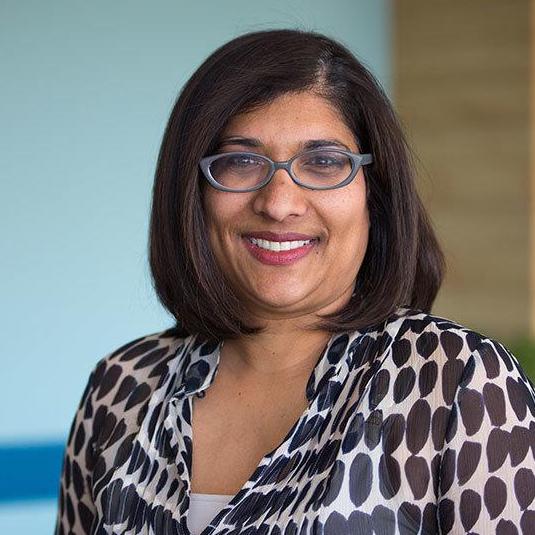Learning through a prenatal ultrasound that your baby may or may not need surgery can be scary. Learning the surgeon may have directed the decision based on race and socioeconomic status? Not ideal.
Researchers at the University of Colorado Department of Surgery are taking a deep dive into the decision-making process associated with a condition called ureteropelvic junction (UPJ) obstruction after learning the decision to have surgery was largely based on surgeon perceptions.
Course of Care Varies Based on Socioeconomics and Race
UPJ obstruction is a blockage in the tube that drains urine into the bladder. It causes urine to “back up” into the kidney, which can cause swelling and impact kidney function. While uncommon, UPJ obstruction occurs in 1 in 1000-1500 births. It’s typically discovered during routine prenatal ultrasounds, which means closer monitoring of mom and baby — and meeting with a surgeon after the baby is born.
According to Vijaya Vemulakonda, MD, JD, professor of urology, there are two primary treatment plans for babies with UPJ. The first employs a “wait and see” method, as over half of blockages will improve over time. The second involves surgery, which occurs in approximately one-third of those diagnosed.
Vemulakonda says her team’s research shows surgeons take a directive approach to decision-making that is influenced by race, ethnicity, and socio-economic status.
The study began with a review of the Kids’ Inpatient Database, a subset of the Healthcare Cost and Utilization Project (HCUP) database. The data showed that patients with Medicaid who underwent surgery were younger than those with private insurance. It also revealed that Black and Latinx children were more likely to have surgery at a younger age compared to white non-Hispanic children.
Data from the Pediatric Health Information System (PHIS) database confirmed these findings. It also showed that infants undergoing surgery prior to 1 year of age had a higher rate of readmission and reoperation.
“It led us to believe that having this kind of early surgery may be associated with additional risks,” Vemulakonda says.
Expanding What’s Known about UPJ and Surgical Decision-Making
Based on these findings, Vemulakonda and her team received a K08 award from the Agency for Healthcare Research and Quality (AHRQ) to perform a mixed method, multi-site study.
To learn how surgical decisions were made, they interviewed parents and physicians at three locations. More than 90% of the children in the study had received a prenatal diagnosis.
“The parents knew their baby had something. But they didn’t have a definitive diagnosis or any ideas what the treatment recommendations were. So their decisions relied heavily upon the surgeon to understand what the prenatal finding meant and to know the right answer for treating it,” Vemulakonda says.
Not surprisingly, parents weighted their decision toward surgeon recommendations.
“There was a sense of anxiety and uncertainty among parents, which led to what appeared to be a reliance on the surgeon,” Vemulakonda says. Many of the parents were also unable to identify treatment options and the point at which a decision was made.
Interviews with the surgeons revealed that they relied on their personal experiences. This includes their perceptions of the demographic circumstances of the parents. For example, surgeons were more likely to take a directive approach to decision making if English wasn’t the parent’s first language. Concerns of patient adherence and lack of follow up were also cited.
Conversely, if a surgeon perceived the parents as being well-educated or having a medical background, the decision-making discussion was more nuanced. Vemulakonda says it was a more collaborative approach to deciding about surgery.
Lack of Guidelines and Heuristics
Vemulakonda says there's a lack of clear guidelines about UPJ obstruction and surgery. This led surgeons to rely on heuristics about patient demographics when discussing options.
To inform the development of clear guidelines, the team continues to gather data through a prospective data registry, assessing surgeon documentation at six U.S. children's hospitals.
So far, they've found "significant” practice variations for who does and who does not get surgery. This includes controlling for the severity of the UPJ obstruction.
Next Steps to Help Decision-Making
The team has used the data collected so far to create a written decision aid, based on feedback from parents and surgeons. It's currently being tested in the CU clinic and will expand to other locations in 2024.
The tool helps parents understand the diagnosis and their preferences for treatment so that they can ask meaningful questions during their visit with the surgeon.
“We want to help parents understand the clear decision point about choosing observation versus surgery,” Vemulakond says. “We want to give them information to better understand the diagnosis before talking to the surgeon, so they’re not relying on the surgeon alone to understand the diagnosis.”
Studying Existing UPJ Guidelines
The team recently submitted a grant to begin to study the use of existing guidelines for evaluating children with UPJ obstruction.
For this study, two sites will implement the guidelines and two sites will act as the control. They will collect data to determine if guidelines are followed and if there are secondary effects of guideline adherence on surgical rates.
It's Vemulakonda's hope that the team’s research will also help them better understand post-surgical outcomes. She also hopes to better understand the population of kids who get better without surgery.
“Right now, it's hard for surgeons to know which kids will benefit from early surgery, because we don’t always use the same standards,” she says.
Vemulakonda hopes her team’s comprehensive approach to studying UPJ obstruction can be scaled beyond urology to study more rare pediatric surgical diseases.
“My question is, how do we create a model that allows us to study relatively rare diseases to create better evidence?”
Vemulakonda also wants to empower patients.
“I want parents to sleep well, knowing they’ve considered all the options and understood there’s nuance to these decisions," she says. "We can better empower parents to feel like a partner in decision-making.”
She believes more engaged parents will help surgeons check their own bias.
“If parents are more engaged in the decision-making process, their adherence to surgeon recommendations is better, and outcomes are better.”



.png)

